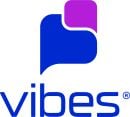Giving feedback is hard. Giving it over a video call is harder.
For managers across the globe, adapting to remote work has meant adjusting how they interact with their teams. Early in the pandemic, meeting bloat struck many people hard: Weekly one-on-ones were soon joined with daily status checks, team huddles, companywide meetings and more, all in addition to frequent email correspondence and flurries of Slack messages.
While most techies have since gained a better understanding of how often meetings need to occur, there’s still the tricky matter of knowing how and when to give feedback to individual contributors. What could have been a nuanced in-person meeting loses some of its personal and emotional connection when done via video, and it can be difficult to know how those conversations fit into a team member’s day during the pandemic; It’s hard to gracefully listen to concerns after, say, fixing a screaming toddler’s lunch or before a big sales call.
So how can managers make individual feedback sessions with their teams more meaningful — whether it’s a fun conversation or a serious one?
In an effort to find out, Built In Chicago connected with seven local leaders who have mastered the art of providing constructive feedback to their teams in a remote environment. While we all hope we won’t go another nine months without seeing our peers in person, these managers show there are plenty of ways to establish trust, empathy and open lines of communication in the meantime.
What they do: TransUnion is a global information and insights company that aims to build trust and solid relationships between companies and consumers through accurate credit and data reporting.
What's different about your approach to giving feedback remotely versus in person?
I’ve managed my team remotely for six years, and one of the biggest things I’ve learned is how important effective communication can be. For the first five years, I’ve been able to combine regular virtual meetings with occasional in-person visits (once every four to six weeks when it was possible) to maintain effective feedback conversations.
Since the pandemic started, like almost everyone I have to rely on virtual meetings only. My previous remote managing experience has prepared me somewhat for the transition. Keeping your video on can help with the overall engagement of your audience, but just make sure you aren’t on mute while speaking – it happens to the best of us! However, keeping the video on can become tiring over time, so I leave it up to my team’s preference. There are many screens fighting for our attention, which is why I encourage everyone to try to be present in the moment.
How do you work with remote employees to determine the best cadence and medium for providing feedback?
It still takes a lot of trial and error to adjust to the new rhythm for all of us. Everyone’s situation is different, and it is important to keep that in mind. Over time, I have settled on a formula of more frequent but shorter touch-base meetings with my direct reports.
At the same time, I keep it flexible so either side can cancel when necessary. The idea is to make sure everyone has enough time to get feedback if needed. While we’ve adjusted to working remotely, it is important to show up for your team each day and to provide constructive guidance so each person is able to bring their best to the virtual office.
Find different channels to communicate updates and wins with your team to increase transparency.”
How do you maintain transparency and communication with your remote team, and how does that support your ability to provide great feedback?
I’m far from having mastered the art of working virtually, but I know how important it is to give honest feedback and also to take the time to catch up with my team.
In addition to setting up standing feedback sessions, I’ve created a knowledge-share via email with my team to share the latest news in our field, progress updates on projects and much more to keep everyone informed.
Communication has never been more important, and my advice to others is to find different channels to communicate updates and wins with your team to increase transparency. When you establish a clear line of visibility with everyone on your team, it makes it much easier to provide great feedback both ways.
What they do: Sprout Social aims to create better bonds between customers and brands through software that provides social media analytics, social management and customer advocacy solutions.
What's different about your approach to giving feedback remotely versus in person, and why?
Our core philosophy and approach to feedback have stayed consistent but with a renewed focus on the intentionality, planning and preparation to give feedback in a fully virtual environment.
It’s important that team members ensure they’re giving feedback when the recipient is in the right headspace to hear and act on it.”
Given the current circumstances, it’s important that team members ensure they’re giving feedback when the recipient is in the right headspace to hear and act on it. It’s also critical to make sure that once the feedback is given, the recipient and feedback-giver are aligned and able to wrap up the conversation with clarity — especially when giving feedback in writing or virtually “face to face,” without tone or body language cues.
How do you work with remote employees to determine the best cadence and medium for providing feedback?
We encourage teams to share their working styles, including their feedback preferences, early on. For example, when we recently onboarded a new team member, I created a "getting to know you" guide where our team shared how we approach feedback as well as each person's preferred medium and cadence for receiving feedback — verbal, written, right away and more.
How do you maintain transparency and communication with your remote team, and how does that support your ability to provide great feedback?
The shift to working as a distributed team has accelerated the need for providing regular, actionable feedback. Now that we’ve settled into our new way of working, we see teams falling into regular rhythms and rituals to both share information and ask for feedback in real time, whether that is in weekly check-in meetings, collaboration over Slack channels or through shared Google docs.
Over the last few years, we’ve been intentional about how we can cultivate an open feedback culture by weaving it into our broader organizational communications and initiatives.
What they do: Technology consultancy Infostretch helps clients work together effectively and secure a strong foothold in the market through integrated services, the use of Salesforce and smart business strategies.
What's different about your approach to giving feedback remotely versus in person?
I think the most crucial aspect of managing a remote workforce is maintaining an open door policy. Not being able to pop into someone’s office, ask your question and get an answer quickly can drastically impact people’s performance and work.
We have also made the shift to give feedback in a more structured way and to whole teams, instead of only to individuals. While remote, it is important to communicate feedback regularly — once a month at a minimum. This provides our employees with a better understanding of how they are doing on a continuous basis.
How do you work with remote employees to determine the best cadence and medium for providing feedback?
The most important thing is making sure there is transparency. To achieve this, everyone needs to feel connected and there needs to be a safe space for employees to be able to ask what they need and get an answer quickly. We use WhatsApp now to communicate with our team, so employees can quickly send a message and get a response.
Being remote inherently means isolation, so we're trying to be more intentional in our efforts to reach out to employees and do frequent check-ins. We have made significant efforts to improve our onboarding process and create a more structured approach. We make sure to pair new hires with a Infostretch buddy — someone who is local and can help answer questions employees may not feel comfortable going to their manager with.
How do you maintain transparency and communication with your remote team, and how does that support your ability to provide great feedback?
For all feedback, we only use video calls, whether it is quick feedback or a more formal end-of-year update. As emails can be misconstrued, we want to ensure we are aligned on what feedback we are sharing with all team members. Alignment is critical in order to guarantee that there is a shared commitment on next steps.
Earning your employees’ trust is a difficult thing to achieve in normal circumstances, and being remote means that as managers we need to put in serious effort.”
When giving any kind of feedback, there needs to be a level of trust between both parties. Earning your employees’ trust is a difficult thing to achieve in normal circumstances, and being remote means that as managers we need to put in serious effort to achieve this. That’s why we have been investing in multiple initiatives to increase employee engagement and provide them an opportunity to connect with the broader company.
We have bimonthly engineering practice meetings where employees are given the opportunity to present on a topic that they are passionate about. We have also done several virtual happy hours and brought in a mixologist to show employees how to make unique drinks.
What they do: Vibes is a mobile engagement platform that enables marketing teams to better connect with their audiences and reach new users. The platform offers tools like SMS messaging, push notifications, personalized user experiences and more to boost sales, traffic and loyalty.
What's different about your approach to giving feedback remotely versus in person, and why?
For the most part, the same principles apply when giving feedback in person versus remotely. One big difference in being remote is that it’s important to focus even more on understanding what is going on in the person’s life outside of work. There is so much additional context we need to take into consideration as to why a person may have performance issues or show up with a different approach than you might expect, and it’s important to get a handle on these things before giving feedback.
Understanding that a parent has a sick child or health issues themselves can and should change your approach dramatically. You still may give the feedback, but the solution could be redistributing work or providing additional support, rather than expecting that the person has the bandwidth to make the change requested without help.
Beyond that, I really focus on providing positive feedback that is consistent and timely. With so much uncertainty in the world these days, it can be easy for folks to worry about job security and not being sure of their environment. These thoughts can be very stressful and hurt engagement and performance.
So, remotely — without the ongoing in-person validation our teams might get walking down the hall or while grabbing a coffee — I work to provide really consistent positive feedback to the team. That also helps any constructive feedback feel more supportive since it is balanced on a foundation of recognizing what has been going well.
How do you work with remote employees to determine the best cadence and medium for providing feedback?
One of the great things about working remotely is the flexibility it has given our team to explore different channels for communication and figure out what we all prefer. I think the main way to determine the best cadence and medium is to ask people what works best for them.
In general, being remote should not change the cadence for feedback, which should be consistent and as real-time as possible. That said, not being able to grab someone at their desk means being more conscious of what my team’s schedule is. They’re in meetings all day, so I try to schedule time to connect and not rely on catching them between calls. That way, if there’s something to share that may elicit any kind of stress response (regret, nervousness or defensiveness), I can provide it with a strong sense of where they are in their emotional and intellectual journey for the day.
Not being able to grab someone at their desk means being more conscious of what my team’s schedule is.”
One example of how we have adjusted is that we offer team members the opportunity to decide if they want to be on or off camera. I had an experience of needing to give some tough feedback on performance, and the recipient asked if they could go off camera (which was totally fine!). This is an option that doesn’t exist in the office – to take feedback that challenges us without having to manage our facial expressions — and it’s been really helpful. Sometimes, it’s nice to just listen and sit quietly to digest, so I try to be conscious of how being off camera can provide a more supportive environment.
I also invite my team to process information and send me thoughts in writing or set up an additional meeting. We all process information differently, and being remote makes it even more important for managers to offer various modes of communication – both synchronous and asynchronous.
How do you maintain transparency and communication with your remote team, and how does that support your ability to provide great feedback?
During our time working from home, I think we’ve all gotten to know each other better. While we always felt like a close team before the transition to working from home, having meetings on camera in our homes with our kids, partners and pets wandering into the camera view from time to time has sparked even more familiarity among our team.
While consistent Slack messages, all-hands and frequent standups have helped us maintain good communication and transparency, I think the biggest quality I have tried to embrace is being vulnerable and making space for my team to be open about what’s going on for them.
In terms of how this plays out with feedback, one thing I have found really helpful is to lead with personal vulnerability and to be really transparent about the things that I am working on for myself and areas where I may have contributed to the challenges I’m addressing.
We work together closely, but miss a lot of vital context that in-person work offers, so it’s critical that I look first to myself – was my direction unclear, did I understand how hard the task would be before I assigned it? I find that taking extra care to explicitly hold myself accountable for my team’s success makes the feedback and adjustment cycle work much better.
What they do: Provi aims to improve the buying process for alcoholic beverage retailers through its platform, which gives retailers need-to-know information and simplifies ordering.
What's different about your approach to giving feedback remotely versus in person?
While we have continued to make giving feedback a priority while remote, the bigger change has been making remote observation a part of our daily lives as leaders. In a remote environment, you have to intentionally put yourself in the position to observe your reports in a much more direct way than how you would in the office.
Normally, you could drop in on a team meeting run by someone who reports to you, pop by and sit in on a call, or overhear something on the floor that sparks feedback. However, in a remote environment, you have to create calendar space — which is more challenging than ever before — and determine in advance the highest-value interactions that you can shadow to be able to give the best feedback.
Only then can you deliver feedback with the amount of detail and specificity that actually creates change. Additionally, with that observation time, you can make sure the change sticks and adds value to both the employee and their team.
How do you work with remote employees to determine the best cadence and medium for providing feedback to them specifically?
At Provi, we have standardized weekly one-on-ones to create the ability and expectation that feedback is given consistently. For example, a sales rep whose monthly target is to onboard 30 new customers will have a weekly one-on-one covering their entire pipeline, from activity expectations to conversion percentages.
Each of our one-on-ones is also an opportunity for the employee to give feedback to leadership on what they need to be more successful.”
Throughout this one-on-one, their manager will give feedback on both the quantitative and qualitative performance that has led to them being on or off track for their goals. For example, a rep may have more than enough leads to hit their monthly target but is struggling to convert them at the same percentage as the rest of the team. Their manager would then dig in, share best practices and schedule a coaching session specifically on the stage of the sales process where they can improve.
Each of our one-on-ones is also an opportunity for the employee to give feedback to leadership on what they need to be more successful. We document each one-on-one so everyone is on the same page and we can follow up on any necessary to-dos or action items. Just in case there is any employee feedback that they are not comfortable sharing, we also use an anonymous survey.
How do you maintain transparency and communication with your remote team, and how does that support your ability to provide great feedback?
I have always had time on my calendar to walk the floor and check in with the team, and without that ability, I have had to create consistent digital ways to check in.
First, I have office hours that can be booked by anyone on the team. I always make it a point to share something positive as an outcome of those office hours with the rest of the group so they are encouraged to sign up as well. Earlier this year, a rep came to me during office hours, asking if we could do something fun to fire the team up for the week leading up to Thanksgiving. We worked with a small group of reps to put together a bingo board as an incentive for the team.
I end every rep one-on-one with an opportunity for them to give me feedback on their team and our leadership team, and what I can do to help them succeed. I also have a standing team meeting that we never move or cancel, with a similar agenda, but we try to make it fun, recognize all the hard work our team is doing and share some best practices. We put out a Q&A form in advance to make sure we are talking about the things that are most important to the team.
What they do: SpotHero is a parking mobility platform that allows users to quickly and affordably find convenient parking, whether for a few hours or on a monthly basis.
What's different about your approach to giving feedback remotely versus in person, and why?
I believe that one of the most important responsibilities a manager has is to create and maintain psychological safety, especially surrounding the process of giving and receiving feedback.
These days, I am starting conversations with, “Are you in a good place where I can give you some critical (or positive) feedback?” This question has multiple benefits: It allows the person to take a pause, examine their surroundings and think about their mental space (are they ready to receive feedback?) and their physical space (are they in a location with limited distractions like kids, pets, partners or construction?).
Requesting consent helps to reinforce the psychological safety between my direct reports and me. I have had reports and peers say, "You know what? Right now doesn't work for me. Can we chat again tomorrow?" At that moment, I feel more connected with that person than before. I will move the conversation from giving feedback to receiving feedback from them: "Of course, what's on your mind?"
At the end of the day, the feedback that I want to give someone is meaningless if that person isn’t prepared to receive it at that moment. Most of the time it's more important to strengthen our relationship than delivering the original feedback. Because our presence on Zoom can be flat at times and I can’t observe if they are capturing notes or evaluating their comfort level, I have gotten into a new habit of ending my conversations with “Did that make sense to you?” or “How did that feedback make you feel?”
Instead of assuming that my message was received, I’m being much more explicit with my words. If I'm being a good manager and leader that has built psychological safety around feedback, employees will feel equally comfortable saying, "Yes, that makes sense," as they are saying, "No, can we go over that again?"
How do you work with employees to determine the best cadence and medium for providing feedback?
Pre-COVID, I met with all Chicago-based employees face-to-face as often as possible in a conference room, or we would switch up the setting by going for a walk around the building or meeting up at the Revival Cafe-Bar in our building. Zoom is SpotHero's teleconferencing technology of choice for remote conversations. There have been some occasions where I've had a one-on-one over the telephone or via Zoom with the video off, but 99 percent of the time, we meet over Zoom with video on.
I don't work with remote employees any differently than I do with co-located ones. I recognize that everyone has different wants and needs from me, so I've found the best way to establish a cadence for giving and receiving feedback is to ask them directly what works best for them. If the employee is new to the company or new to me as their manager, I will suggest that we meet at least weekly for 30 minutes.
I've found the best way to establish a cadence for giving and receiving feedback is to ask them directly what works best for them.”
This is more about creating and establishing a relationship than giving feedback weekly. With more senior employees and those that don’t directly report to me, I’ll let them decide the cadence — some want 60 minutes weekly, others are satisfied with 30 minutes every other week. At their level, they have the autonomy to select the right cadence for us. I will also do an audit roughly every six months and ask them, “Does this day at this time in this cadence still work for you, or do you want to change it up?”
For employees that don’t directly report to me but to a manager that directly reports to me (aka skip-level employees), I host a quarterly check-in where I set up a Zoom meeting to hear directly from them on how they are doing, how their manager is performing and what more I or their manager can be doing for them. Finally, I have an open calendar policy, whereby anyone can add a meeting to my calendar if they want to talk about anything.
How do you maintain transparency and communication with your remote team and how does that support your ability to provide great feedback?
Engineering and product managers at SpotHero have a saying that if you haven’t communicated something six times, you haven’t communicated it enough.
While we all joke about this, it’s more true now than ever before. I have learned that our engineers read and comprehend information in different ways: emails, Slack, Confluence, Jira, standups, all-hands meetings — and if I want to ensure someone receives information, I know that I have to cast a wider net to ensure they receive the information in a medium that best works for them. So I do that.
One of the benefits of over-communicating important information is that when I’m giving feedback to an employee, they already have shared information on the topic from the multiple communications. This creates an opportunity for them to ask follow-up questions and allows me to provide additional information that may be relevant to them.
Beyond delivering important information and feedback, I’ve found that it’s more important than ever to create digital opportunities for casual catch-ups. Over the last 10 months, I’ve either hosted, co-hosted or participated in online happy hours, yoga and meditation sessions, trivia contests and collective MasterClass watching parties, to name a few. I also try to leave open blocks of time on my calendar for ad hoc 15-minute chats. These planned, culture-oriented activities allow us to stay connected and fuel relationships despite the physical distance.
What they do: Nerdery is a digital business consultancy that helps customers implement cutting-edge tech solutions, like cloud services, replatforming, digital product development and more.
What's different about your approach to giving feedback remotely versus in person?
For many companies, the approach to formal feedback processes that happen quarterly or yearly continues mostly unchanged, albeit now virtual.
Conversely, informal feedback, the kind that happens constantly when you are in-person, has become more of a challenge. Things that we do naturally and instinctively in person can feel unnatural in a remote world, and require more thought and effort to get across. I would argue that extra investment is worthwhile because this informal feedback is often the most important in our work.
When working together in person, you could easily check in with your team as you finished a meeting. It was easy to make small talk and read body language and was a natural point to give feedback. With remote work, people drop off calls quickly, but that doesn’t mean those pieces of feedback and interactions should also drop off.
So, fundamentally this is how I have changed my approach to feedback: Now I make more of a concerted effort to either sit down with my team members in an ad-hoc one-on-one video call or to send a Slack message with feedback as soon as meetings are over.
How do you work with remote employees to determine the best cadence and medium for providing feedback to them specifically? Share an example.
It might sound simple, but I believe the best way to determine the cadence for feedback is to be honest, earnest and persistent with your communication.
One of the first things I did when we went remote was to set up biweekly meetings with all my direct reports. However, the agendas of these meetings were left intentionally vague. The only formal talking was about the meeting itself and that it should fit their needs for their new workstream while working remotely.
I empowered my employees to evolve our relationship and process to fit their needs and saw better engagement from them as a result.”
Over time, I found that some people responded better to scheduled meetings while others responded better to impromptu meetings or Slack messages. To figure this out, I didn’t have to do any fancy social engineering, I just asked them what they preferred. Over time, the process has changed and evolved into a solution that works best for them. I empowered my employees to evolve our relationship and process to fit their needs and saw better engagement from them as a result.
How do you maintain transparency and communication with your remote team, and how does that support your ability to provide great feedback?
In order to maintain transparency and communication, you need to be proactive about recreating the in-office experience remotely. Remotely, it’s easy to make assumptions, as conversations are either through text or in private conversations.
To reiterate a little, in a remote world we have to make sure that we are communicating with our teams more than we do in person. Make sure you are communicating in larger team channels things that are decided in private conversations and try to make a habit of it.
Lastly, work to encourage a culture where it’s OK to ask questions. I have found that when you are working remotely, it might seem like an annoyance to ask a question that you would have had no hesitation to ask in person. This is something you have to actively work with your team to get over.
Opening communication and making an effort to replicate in-person culture will go a long way toward making sure you are able to foster trust and community with your team. Without trust or a sense of community, it is increasingly difficult to provide great feedback.
While remote communication is different than in-person communication on some levels, it really doesn’t have to be. It takes some getting used to, like everything this year, but over time the skills we have taken for granted in person just need to be applied in new and different ways.


















